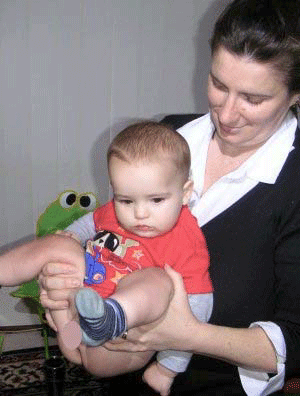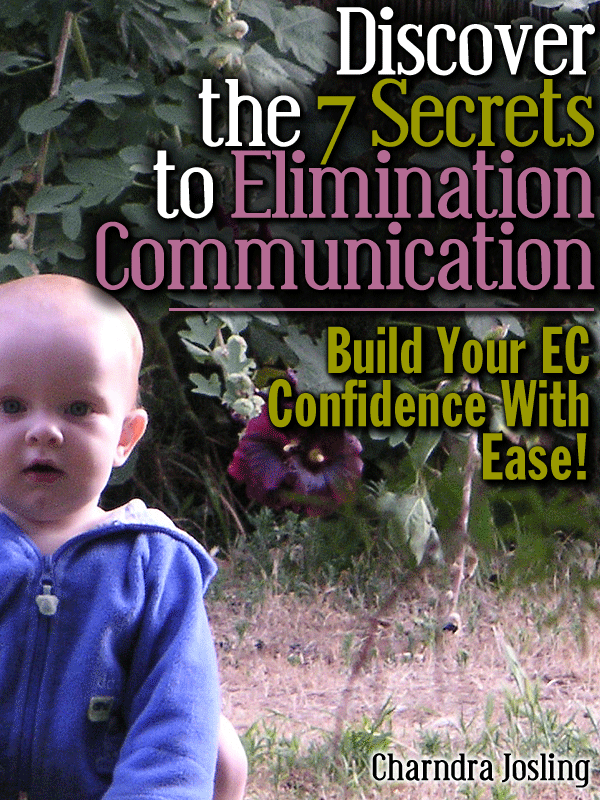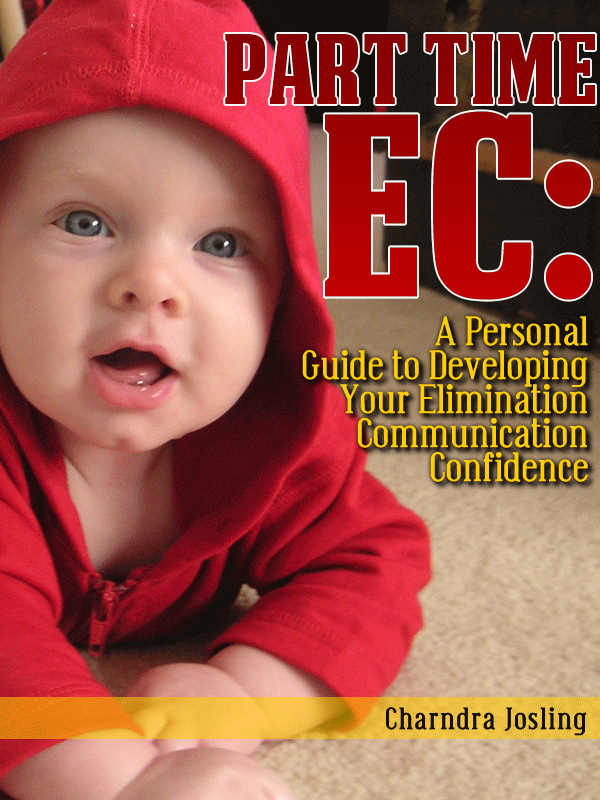Download my FREE My Elimination Communication Guide…
7 Tips to Start Pottying Your Baby With Elimination Communication
7 Tips to Start Pottying Your Baby Today!
My Quick Start Guide to Pottying Your Baby Using the Elimination Communication Method…
By Charndra Josling
You’re interested in beginning this ancient art – helping you to communicate with your baby about their basic bodily needs, and in the process discovering that you can reduce the number of diapers or nappies you need to use. (It’s really about the bond it brings)

- This photo shows me holding baby Jett in the classic EC Squat position. It aids easy elimination, and is the traditional way of holding a baby. A newborn is supported by your body, as they are until they can sit on a potty. In arms is great as you can offer a quick wee when out over a loo or a discrete bush to keep that diaper dry a bit longer.
Baby Pottying is fun, it can help little newborns feel more comfortable, help you understand more ‘unexplained’ fussing or crying, reduces poopy nappy changes! It helps any parent reduce the environmental impact of a baby – even by striving for just 1 less diaper or nappy a day. Give it a shot – see how you go!
Your Baby Will Still Wear Diapers – But Not ‘Use’ Them 100% Of the Time…
The 1st thing to know is that becoming ‘diaper free’ or ‘nappy free’ is the destination of your EC journey, NOT the start.
Elimination Communication is a gentle and responsive activity to practice daily with your baby.
It’s about your relationship.
The 2nd thing to know is that Baby Pottying is something fun to enjoy with your baby, to chuckle when you have a miss – as yes, they will happen. Change the diaper or nappy and move on…
You can be part-time diaper or nappy free by practicing a little baby pottying. (a fussing baby is often a signal that your baby needs your help to ‘go’.)
Our babies gradually and slowly learn to eat, crawl, play, talk, walk – they can learn to use the toilet in much the same naturally evolving way. You may need to get a few paradigm shifts going to help them though, as our society currently favours doing nothing but cleaning up after them until they are 3 or more.
7 Quick Tips to Get Started with Elimination Communication:
1. Offer a potty break when your baby wakes, or if they seem ‘unsettled’ or ‘fussy’.
2. Offer simply at nappy changes. Trickle water from the tap. Say ‘sss pss’ whenever they pee so it helps them know the feeling of when they go.
3. Breathe slowly and deeply, tighten your belly muscles when offering a pee-break, and wait patiently about one minute. Talk to your baby about what you are doing together. Smile at baby in the mirror. Sing a potty song. I’ve collected over 40 potty songs and cheers here.
4. Find some time to give baby a diaper free hour on a washable surface (towel, tiles, a waterproof
mat) so you can observe to begin learning their physical or verbal signs for when they need to wee.
5. Learn to hold your baby in the ‘classic’ EC position – back safely against your belly, hands
gripping and supporting their thighs from below, holding them slightly apart. Practice with a doll if
nervous. Try it out over the bath or laundry sink so you don’t have to ‘aim’ yet.
6. Look into buying a baby potty – potties with smaller holes so your baby can sit more comfortably with your help. A clean bucket is a great first potty – hold between your knees as you dip baby’s bottom in. I still use one!
7. Have fun figuring it out with baby – you might just get addicted. (Skipping messy diaper changes is a huge bonus!)
Perhaps Baby Pottying Will Be A Wonderful Discovery for Your Family?
It’s easy to give it a go as your baby wears diapers between potty visits. There is no concern about ‘mess’ everywhere. Your baby will go in their diaper or nappy as usual when you miss their needs or are otherwise
busy at the time. This is how modern families practice EC.
EC is a flexible option, you need to have some daily consistency, a regular time you give your babe the ‘opportunity’ to use a baby potty to help them stay aware and give them the opportunity to go so you can use your ‘cue’ sound to help them learn when to go.
For Further EC Support you can purchase my popular eBook:
‘Part Time EC: A Personal Guide to Developing Your Elimination Communication Confidence’
Feel free to share these 7 Quick Start EC Tips:
Discover More about My Elimination Communication eBook…






Leave a Reply